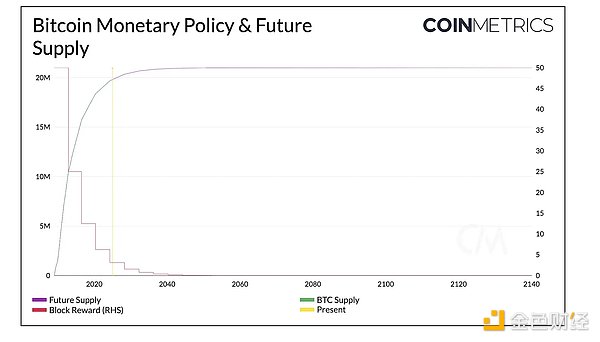
Author: Matías Andrade Cabieses Source: Coin Metrics Translation: Shan Ouba, Golden Finance
IntroductionSince 2009 Since its birth in 2006, the world’s first and most famous cryptocurrency has experienced countless ups and downs, achieved major milestones, and fundamentally changed the financial and technological landscape.
In this article, we look back at the remarkable journey of Bitcoin on its 16th anniversary. As we look back at Bitcoin's transformative impact and look ahead to its potential future, we'll explore key developments, challenges overcome, and the evolving stories surrounding this groundbreaking digital asset. From its humble beginnings as an obscure white paper to its current position as a globally recognized store of value and potential hedge against economic uncertainty, Bitcoin’s story continues to fascinate investors, technologists and framers. Join us for a deep dive into the legacy of Satoshi Nakamoto’s creation and its impact on the future of currency and decentralized systems.
The Beginning of a RevolutionOne of the most revolutionary aspects of Bitcoin is that it is an interference-free form of currency with a clear currency. Unlike traditional fiat currencies, which are influenced by central banks and governments, the supply and issuance of Bitcoin is determined by algorithms encoded in its underlying blockchain technology. This decentralized and transparent approach to money is a fundamental driver of Bitcoin’s appeal, as it provides a reliable and predictable framework for the creation and distribution of this digital asset.
Bitcoin’s lack of currency control directly challenges the long-dominant center Centralized financial system. By providing an alternative to issuing currencies, Bitcoin gives individuals and communities greater power to control their own financial affairs. This paradigm shift has far-reaching consequences, as it opens the door to a more equitable and accessible financial environment, free from the constraints and potential abuses of centralized authority.
In addition, Bitcoin’s planned issuance plan (with a fixed maximum supply of 21 million coins) has been widely praised for its ability to withstand the inflationary pressure that often plagues traditional fiat currencies. praise. This scarcity, coupled with the decentralized nature of the network, has contributed to Bitcoin’s growing recognition as a store of value and potential hedge against economic uncertainty.
As the world grapples with the ongoing effects of fiat currency devaluation and reduced purchasing power, Bitcoin has become an increasingly attractive currency for those seeking a more stable and predictable financial future. Powerful choice. This revolutionary feature of Bitcoin is a key driver of its widespread adoption and growing attention from framers, investors, and the public.
Pursuit of stability and trustworthinessAs Bitcoin matures as a digital asset, two important economic concepts have come to the fore: stability and trustworthiness. These factors are often considered in the context of dollarization, the adoption of a foreign currency by a country or region process as its primary medium of exchange
One of Bitcoin’s main disadvantages relative to the world’s major fiat currencies is its volatility. Data analysis shows that Bitcoin’s price volatility has steadily declined, especially compared to its early days. This increase in stability has been driven by institutional investment Driven by factors such as growth, the development of complex trading instruments and derivatives, and the overall maturation of the cryptocurrency market, Bitcoin currently has daily volatility of around 2.6% – still well below the world’s best fiat currencies, but on par with some other emerging markets. It's surprisingly competitive compared to currencies.
As this stability continues to grow, the rise of stablecoins further enhances the sustainability of the cryptocurrency ecosystem. Trustworthiness. Stablecoins are digital assets designed to maintain a stable value, often pegged to fiat currencies such as the U.S. dollar. The total market capitalization of stablecoins has grown to more than $200 billion, reflecting the growing demand for these more stable digital currencies.
In addition, Bitcoin exchange-traded funds (ETF) The emergence in the United States has also contributed to the growing credibility of the asset. With more than $115 billion in assets under management, these financial instruments provide institutional investors with a regulated and accessible method to invest in Bitcoin, further enabling them to invest in Bitcoin. Cryptocurrencies become a viable investment option
These developments in stability and trustworthiness have important implications for the potential role of Bitcoin and other cryptocurrencies in the global financial system. As the ecosystem continues to mature and demonstrate its ability to withstand market volatility, the U.S. dollar The prospect of digital assets becoming more widely adopted as alternatives to traditional fiat currencies is becoming increasingly credible as Bitcoin celebrates its 16th anniversary. A revolutionary digital asset that has clearly had a profound impact on the global financial landscape. Bitcoin has grown from humble beginnings as a white paper.Becoming a globally recognized store of value and potential means of hedging economic uncertainty.
One of the most transformative aspects of Bitcoin is its decentralized currency, which is free from interference and defined by a transparent algorithm-driven framework. This is in stark contrast to the centralized control of traditional fiat currencies, which is a major driver of Bitcoin’s appeal, giving individuals and communities greater control over their financial futures.
Bitcoin’s stability and credibility through reduced volatility and the growing popularity of stablecoins and Bitcoin ETFs further solidify its role as a traditional financial status of viable alternatives to the system. These developments have significant implications for the potential role of Bitcoin and other cryptocurrencies in the global economy, as the prospect of dollarization, or the widespread adoption of digital assets as a replacement for fiat currencies, becomes increasingly credible.
Looking to the future, Satoshi Nakamoto’s creative legacy will undoubtedly continue to influence the evolution of finance, technology, and currency itself. Bitcoin’s 16th anniversary is a testament to the resilience, innovation and transformative power of this groundbreaking digital asset, and heralds an exciting and unpredictable road ahead.











